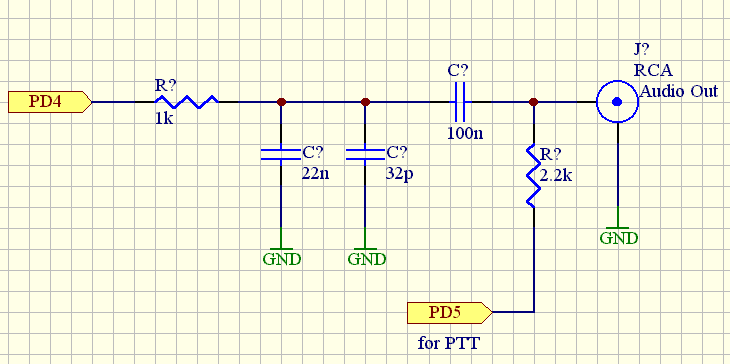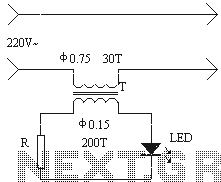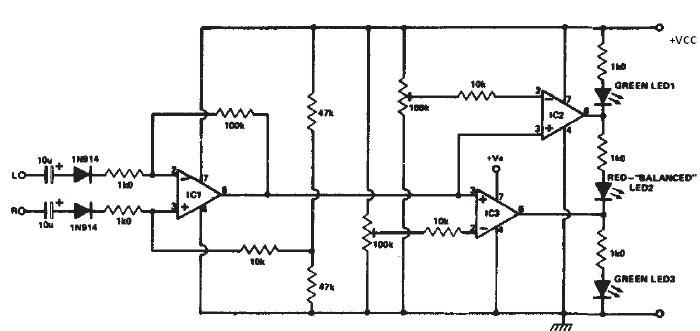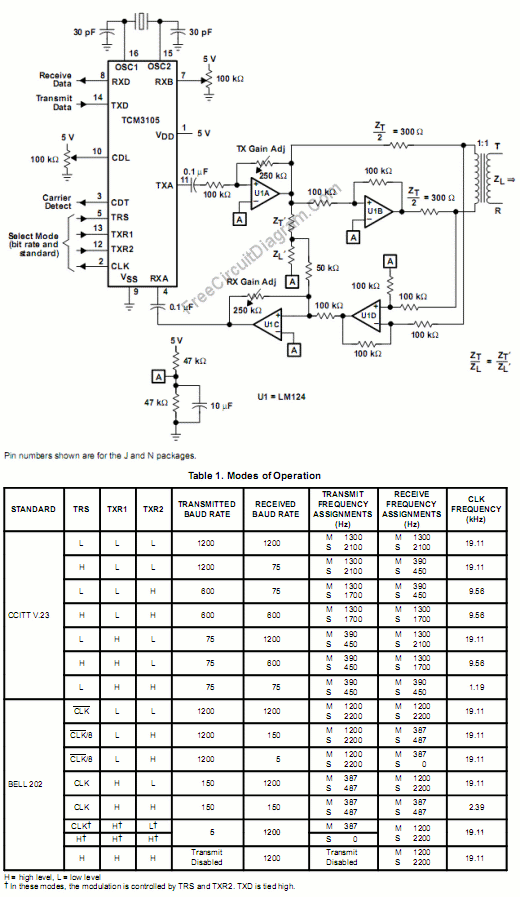
Modem shutdown Indicator
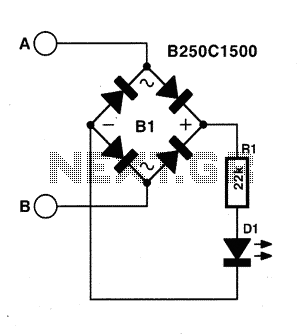
The circuit is designed for individuals who spend extensive hours exploring the various resources of this site. Although it comprises only three components, it effectively indicates whether the telephone line has been released after a prolonged connection via modem to the network. This functionality is particularly valuable, as there are instances where the computer indicates that the telephone network connection has been interrupted, yet the modem continues to keep the line engaged. The simple circuit provides visual indications that help prevent unwanted charges on the phone bill, ensuring that after two months, the account remains reasonable. The circuit operates based on the characteristic of the line, which maintains a voltage potential of 40 to 50 V. During certain conditions, the line can experience a sudden current spike of approximately 1 A.
This circuit utilizes a minimalistic design, relying on three essential components, which may include resistors, diodes, and a relay. The primary goal is to monitor the status of the telephone line, specifically to detect if the line is still active or has been released. The inclusion of a relay allows for the isolation of the modem from the telephone line, preventing it from maintaining a connection when it should be disconnected.
The circuit can be powered directly from the telephone line, utilizing the voltage present (typically between 40 to 50 V) to operate without the need for an external power source. The voltage is sufficient to activate the relay, which is responsible for switching the connection based on the line's status.
When the modem is engaged and the line is active, the circuit remains in a standby state. However, once the modem disconnects, the circuit will trigger an indication, such as an LED light or an audible alert, notifying the user that the telephone line has been released. This feature is crucial for users who rely on their modems for internet connectivity and want to avoid unnecessary charges on their phone bills.
In conclusion, the circuit serves as a practical solution for monitoring telephone line status, ensuring that users are informed about their connection state and can manage their phone usage effectively. The simplicity of the design combined with its effectiveness makes it an ideal choice for individuals who frequently use modems for internet access.The circuit has been designed to accommodate all those who dedicate many hours of their lives by exploring the endless pages of this site. Despite the fact that it consists of only three components (Most were not little!), Is able to provide an indication of whether it actually released the telephone line after a long connection via modem to the network.
This can be particularly useful, since there In many cases, the computer claims that the telephone network connection has been interrupted, but the modem for some reason keeps the line engaged. Symvoulemomenoi indications of this simple circuit you save by unwanted "blocks" of your phone, while ensuring that the end of two months the account will is reasonable. The circuit is based on the specificity of the line to keep a potential that the rest reaches 40 or 50 V.
The same line, that when some conference, 'throw' the trend is sharply to about 1 A n.
This circuit utilizes a minimalistic design, relying on three essential components, which may include resistors, diodes, and a relay. The primary goal is to monitor the status of the telephone line, specifically to detect if the line is still active or has been released. The inclusion of a relay allows for the isolation of the modem from the telephone line, preventing it from maintaining a connection when it should be disconnected.
The circuit can be powered directly from the telephone line, utilizing the voltage present (typically between 40 to 50 V) to operate without the need for an external power source. The voltage is sufficient to activate the relay, which is responsible for switching the connection based on the line's status.
When the modem is engaged and the line is active, the circuit remains in a standby state. However, once the modem disconnects, the circuit will trigger an indication, such as an LED light or an audible alert, notifying the user that the telephone line has been released. This feature is crucial for users who rely on their modems for internet connectivity and want to avoid unnecessary charges on their phone bills.
In conclusion, the circuit serves as a practical solution for monitoring telephone line status, ensuring that users are informed about their connection state and can manage their phone usage effectively. The simplicity of the design combined with its effectiveness makes it an ideal choice for individuals who frequently use modems for internet access.The circuit has been designed to accommodate all those who dedicate many hours of their lives by exploring the endless pages of this site. Despite the fact that it consists of only three components (Most were not little!), Is able to provide an indication of whether it actually released the telephone line after a long connection via modem to the network.
This can be particularly useful, since there In many cases, the computer claims that the telephone network connection has been interrupted, but the modem for some reason keeps the line engaged. Symvoulemomenoi indications of this simple circuit you save by unwanted "blocks" of your phone, while ensuring that the end of two months the account will is reasonable. The circuit is based on the specificity of the line to keep a potential that the rest reaches 40 or 50 V.
The same line, that when some conference, 'throw' the trend is sharply to about 1 A n.
